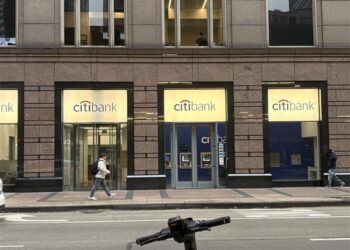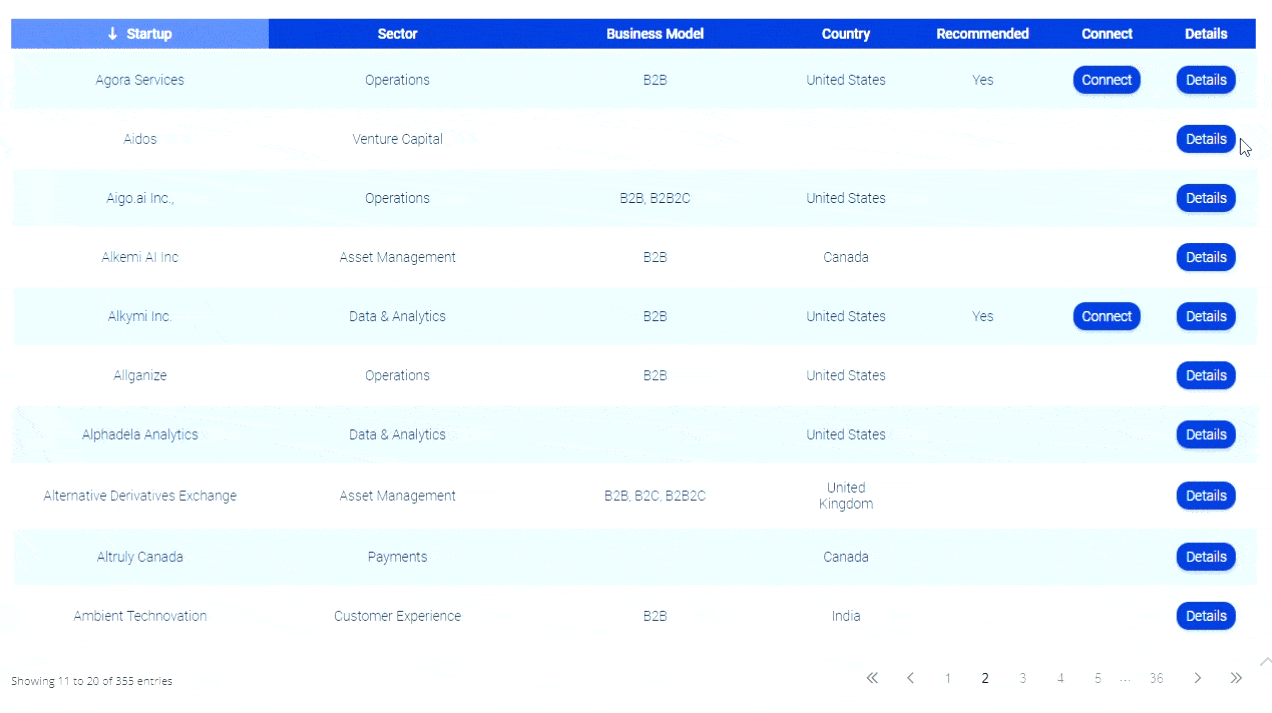Podcast: Austin Capital Bank CEO Erik Beguin on AI-driven fraud
Consumers reported $12.5B in fraud losses in 2024
Fraud is on the rise, and AI is contributing to both the solution and the problem.
“Fraud is a really large problem and growing exponentially,” Austin Capital Bank Chief Executive Erik Beguin tells FinAi News in this episode of “The Buzz” podcast.
Consumers reported losing $12.5 billion to fraud in 2024, according to the FTC.
And that’s probably understated, Beguin says, noting that not all consumers report being defrauded, due to embarrassment, being in denial or other reasons.
Fraudsters are using AI to target individuals, using it to read social profiles and identify the best way to attack a person, he says. This streamlines an extremely laborious task for bad actors.
On the other hand, FIs are using AI to boost account security, Beguin says. For example, consumers and financial institutions are likely to start moving away from usernames and passwords and even traditional multifactor authentication methods. Instead, the market should move toward biometrics and AI-driven device and image authentication.
Beguin will speak at the inaugural FinAi Banking Summit in Denver, during the panel “Gen AI in the ring: Fight against fraud” on Tuesday, March 3, at 1:15 p.m. local time. Register for the FinAi Banking Summit here to take advantage of early bird pricing.
Subscribe to The Buzz Podcast on iTunes, Spotify, Google podcasts, or download the episode.
The following is a transcript generated by AI technology that has been lightly edited but still contains errors.
Whitney McDonald 12:04:39
Whitney, hello and welcome to The Buzz a fin AI news podcast. My name is Whitney McDonald and I’m the editor of fin AI news. Fin AI news has rebranded from bank automation news, marking the next step in our mission to lead the conversation on innovation and Financial Services Technology. Joining me today, November 18, 2025 is Eric begin, CEO of Austin capital bank. Eric is here to discuss the state of fraud in financial services today and how to navigate an environment where AI is both streamlining fraud for bad actors and supporting security at FIS. Thanks for joining us, Eric. Well,
Erik Beguin 12:05:14
perfect. Whitney, thank you so much for having me. Yeah. So Austin capital Bank is a bank located in Austin, Texas, we’re about a half a billion dollars in assets growing pretty rapidly. I think we grew about 60% in assets last year. And we specialize in digitally delivered products nationwide. We build our own, say, FinTech products. We have products for credit building. And our most recent product that we’re launching is a product designed to protect American consumers and small business from fraud. For my part, I’m a non traditional banker, and I really think about banking in community as a set of consumers or set of small business owners with common unmet needs, versus being geographically located in close proximity. So we serve customers in all 50 states across the nation. Perfect.
Whitney McDonald 12:06:03
Well, you mentioned one of the products that you have is to address the state of fraud today. Let’s kind of talk big picture. We’ll get into what you guys offer, and we’ll get into Fort Knox specifically. But why don’t you kind of tell me about where we stand today, the state of fraud from that, from that broader lens,
Erik Beguin 12:06:22
Whitney perfect, fraud is a really large problem and growing exponentially. There are estimates for fraud range anywhere from like, I think there’s an FTC estimate from $12 billion of consumer losses a year to the Aspen Institute just put something out that estimates fraud might be $150 billion of losses to Americans in just one year. And when whatever those those numbers are, they’re actually understated, because when somebody is the victim of fraud, sometimes they don’t realize they’ve been defrauded. Sometimes they’re in denial that they’ve been defrauded, and sometimes they’re just too embarrassed to tell anyone that they’ve been defrauded. So whatever the fraud numbers are, and they are large and growing rapidly, they’re understated. So fraud is a massive problem, and it might even be a what some might consider a secure national security threat at this point.
Whitney McDonald 12:07:13
Now, we can’t really talk about fraud or financial services or anything these days without talking about artificial intelligence, and just like financial institutions and tech providers are investing in AI, fraudsters are obviously also leveraging the technology to defraud people. How is fraud making it easier for fraudsters? What are some of those threats that financial institutions and consumers alike should be watching out for
Erik Beguin 12:07:41
Yeah, that’s a great question, Whitney, and what, what really has happened is fraud has moved from, you know, the hacker and the hoodie in their mom’s basement into large corporations with 1000s of workers. And I use the word workers intentionally, not employees. These are people who are usually tricked into coming into some country where they’re essentially held hostage, and the companies are run by criminal syndicates in these safe haven countries, and there might be 1000s of employees in a compound, and they are using the very best in technology. They’re investing in technology because they’re making billions and billions in dollars a year in fraud gains. And they turn around and they use that, and they vest it to just like a business, right? They’re in the business of fraud to maximize the gains they get. So they have the best tools, they have the best technology. There’s actually training on psychological how to psychologically break somebody down, and then these workers are punished if they do not bring in money. So what might they do? So in the past, every American should know that all of our information has been sold and is available readily on the dark web. And so in the past, I would say these efforts were more broad based and hodgepodge by these companies, but with AI, they can now specifically target an individual consumer. They would say, like, I want to target Joe Smith. And they will have aI get all the information for Joe Smith, and then specifically target Joe Smith. Like, where does he bank? What’s he involved with? Go read his social profile, all these things, and then then decide on the type of attack they might do using AI, and before this would be an extremely laborious process, taking a lot of hours, and just like a normal business, like they want to invest, they want to get the maximum return on the hours they invest, but with AI, they just accelerate those efforts and make them much broader, so that. Red is growing exponentially with AI.
Whitney McDonald 12:09:42
Now I kind of wanted to talk a little bit here about what to do to prevent that fraud. Watch for that fraud. Authentication is one of the topics that I wanted to talk through, and that also kind of bleeds into Fort Knox as well. But authentication isn’t always, you know, the perfect solution. What are some examples of authentication that should or maybe should not, be trusted,
Erik Beguin 12:10:04
perfect. So authentication for for years now, we’ve been using usernames and passwords. Everybody’s got usernames and passwords, and everybody has too many username and passwords so they can’t remember them. So most people actually recycle their username and some passwords. And the bad thing is, is, if the hackers ever break into one website with your username or password, and I think it’s something like I had the stats here somewhere, it’s like 60% of Americans reuse their identity. 62% of Americans reuse their username or password, and then the fraudsters will use those username and passwords that they get off the dark web, and they’ll do what’s called credential stuffing. And so they will go in and they will try to use those credentials on every banking website or financial website that that consumer is associated with. And 50% of login attempts use credential stuffing, right? So username and password, I think the time of the user and password is quickly coming to an end. I also think one time use text codes. Those codes can be intercepted fairly readily, so that that’s multi factor authentication for all your listeners, right? You’ve got username password, and I’m going to send you a text code. I can I can trick you into I can buy your username and password, and I can intercept your your text code, and I can readily access your customers financial services, interestingly, also where banks have been moving to sort of authentication and using AI for voice recognition authentication. I believe the CEO of OpenAI came out and said, AI has already defeated voice recognition. And so there are some companies that use voice recognition to call and confirm a trade, and I think that the days of that being a secure method of authentication are over. So username, password, one time, text, code to a to an unsecure phone number, and voice recognition authentication, I think all of those are likely on their way out. So where are we going? So, right? Well, we’ve replaced that, yeah. So, you know, I think the things where we are going is biometrics, for sure, and I think we’re going to on device biometrics and we’re going to off device biometrics. And there’s a difference between those two. I can go into more detail if you’re interested in that. I think we’re going into user behavior and device behavior. And really this is where AI can come in and say, okay, is this device being used in a place, in a manner that would be typical of a human, right? And then it would be typical of this specific user. And then onto the biometrics match. And then, of course, you have to defeat live image injection that’s powered by AI on the other side. But I think we’re going to end up in a world like this, where it really is your device, your biometrics, and then also what you know, so some, some sort of like challenge thing that you know. And I think contrary on the on the inverse side of that is that something that we put in Fort Knox, and I think that will become more prevalent, is the ability for the user to actually challenge the identity of the bank, because there’s a lot of scams today, like the Phantom hacker scam, for example, where you know the bank is calling the consumer, but it’s not really the bank, and the consumer can’t really verify it’s the bank. So we’ve built in where the consumer can create challenge questions, questions for us, and, you know, Vice like, we want to know it’s them, and then they can prove that it’s us. And we don’t know anything about that challenge question, except when you’re at the right level of access, you can see like what the answer is to that question on our side. And then we both know that we are speaking with the intended party
Whitney McDonald 12:13:54
for our listeners that might not know, can you share what Fort Knox is and what the innovation behind that is,
Erik Beguin 12:14:01
yeah, sure, so Fort Knox is, I believe, America’s first high security banking platform. So about five years ago, I sit in my office during covid, and I was looking at the fraud landscape, and I just thought fraud was going to explode. And I really saw this, this conundrum that banks were facing, where they’re trying to provide convenience and they’re trying to provide security. And the problem with this is these two things are fundamentally juxtaposed against each other. The more convenient you make it to move your money. 24/7, real time payments, you know, P to P payments, the less secure it is, and the more secure i. You make people’s money, the less convenient it is to move it. And so we really looked at breaking those two apart. And so what we created is Fort Knox, and it’s really complementary to the current checking account that you already have, so that you can have the convenience of your checking account and the security of Fort Knox for your savings. And really under the premise that you shouldn’t keep all your money in one bundle. And whereas you need the ability to quickly move money for payments, you have your utility payment, you have purchases and whatnot, and those are all attached to your spending account, your checking account, you don’t need the ability to send your money instantly overnight to sub Sahara Africa or Southeast Asia for your savings account. And so really, you break these two apart and Fort Knox, dot bank high security savings focuses solely on savings, and it has a whole host of mechanisms to keep your savings safe and still allow you to have the convenience of your current checking account.
Whitney McDonald 12:15:38
Now our listeners should read more about that. I’ll plug up that we have covered that savings account as well. For more details about that. We have, you know, covered that too. Now you talked a little bit about the beginning, and that about this at the beginning, and you just talked about Fort Knox as one example. But you really do have an entrepreneurial mindset. You look for those needs, and you try to innovate against those needs of the market, fraud being one. Any other innovations in the pipeline? What’s peaking your interest right now? Maybe even just an approach to how you approach technology at Austin capital, but but also, you know, through the innovations that you come up with, but anything in the pipeline? What’s, what’s, you know, sparking your your interest? Yeah. So we
Erik Beguin 12:16:26
have an existing product line called credit strong, right? We have hundreds of 1000s of clients on that. We had close to 1000 every day, and that’s really for people with no credit, then credit or bad credit. And really what we’re seeing over there is a lot of and this is what got us into the fraud space. Also is a lot of identity theft and synthetic identity theft and first party fraud. So we have a lot of interest in that. We’re building out some data tools that we might share with some other banks. They are very interested in the analytics that we’ve developed here. So we’re looking at that, and then really we’re looking at Fort Knox today, it’s designed to protect your savings for consumers, account takeover. And corporate account takeover is a massive problem for small business. The losses there are much larger and the number of people that you can potentially compromise are much larger, because all they need is one employee to use business email compromise, for example, get into a business and just monitor and just wait and get access to those commercial accounts. So Fort Knox is going to expand to protecting small business cash reserves, and then it’s going to expand into payments and receivables. We have a whole product product roadmap for Fort Knox to provide these high security measures. Will never be an all encompassing bank with Fort Knox, because it will carve off the pieces that need to be highly secure and secure those and still allow you to keep your current banking relationship and the flexibility and the relate the probably local relationship that you have there. I think the things that we could hit on is that education is not enough. Everybody’s been preaching education for fraud prevention for so long and and it just doesn’t work because the fraud attacks are so sophisticated. I think we also need to focus on protecting our elders. Over 50% of fraud attempts are against people who are 60 years or older. And so to enhance our efforts, really, we need to look at structurally building products and services that have security and fraud prevention built into the product to protect the consumer when they just aren’t aware of what they even need to be protected from.
Whitney Mcdonald 12:18:44
You’ve been listening to the buzz a fin AI news podcast. Please follow us on x and LinkedIn, and as a reminder, you can rate this podcast on your platform of choice. Please be sure to visit us at finaI news.com for more finaI News. Thanks for listening. You.
Transcribed by https://otter.ai








